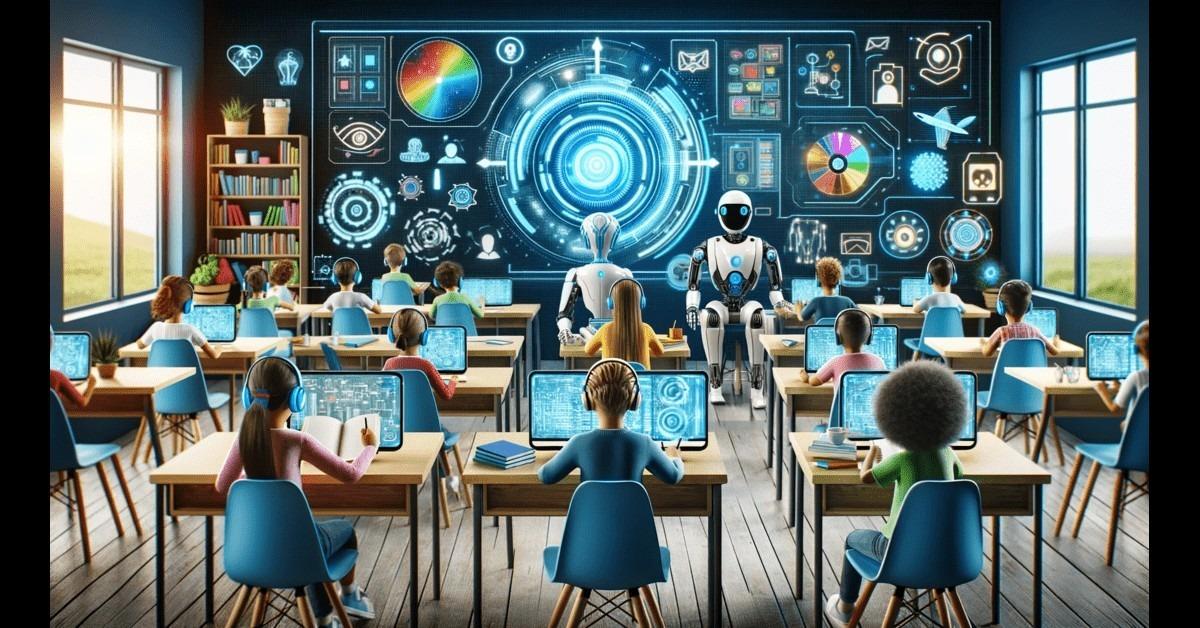10 Emerging Trends Shaping the Future of Digital Learning Environments
As the digital era continues to revolutionize the education sector, digital learning environments are experiencing remarkable transformation. Technologies such as Artificial Intelligence (AI), Virtual Reality (VR), and adaptive learning tools are redefining how students learn, educators teach, and institutions deliver education. To stay ahead, it’s crucial for educators, students, and edtech professionals to stay informed of the latest trends shaping the future of online learning. In this article, we delve into the 10 emerging trends shaping the future of digital learning environments in 2024 and beyond.
Why Stay Updated on Digital Learning Trends?
Understanding the current and future trends in digital learning environments can definitely help educators innovate teaching, institutions boost engagement, and learners maximize outcomes. By embracing the latest online learning trends, organizations can enhance user satisfaction, optimize resources, and foster lifelong learning.
Top 10 Emerging Trends in Digital Learning Environments
-
1. Artificial intelligence and Machine Learning in Education
AI-powered platforms are personalizing learning by analyzing student behavior, adapting content, and providing tailored feedback.Machine learning algorithms automate grading, monitor progress, and predict student success, making digital learning environments more efficient and effective. Notable uses of AI in online education include smart tutoring systems, automatic content curation, and smart chatbots supporting learners 24/7.
-
2. growth of Microlearning Modules
Microlearning breaks complex topics into bite-sized lessons, making content digestible and easy to consume on-the-go. With the rise of mobile learning, this trend supports just-in-time knowledge acquisition and increased retention. Short video tutorials, interactive quizzes, and flashcards are common formats that enhance user engagement in digital learning platforms.
-
3. Virtual and Augmented Reality (VR/AR) Integration
Immersive technologies are transforming customary classrooms into interactive spaces. VR and AR enable experiential learning, allowing students to explore 3D models, conduct virtual labs, and participate in realistic simulations. Educational apps like Google Expeditions and Labster are paving the way for this trend, making digital learning environments more engaging and memorable.
-
4. Accessible and Inclusive Learning Design
Accessibility in digital learning is becoming a non-negotiable standard. Platforms now incorporate captioning, screen-reader compatibility, and adjustable text sizes, empowering learners of all abilities. Adhering to global design principles not only widens the audience but also enhances user satisfaction and compliance with international standards.
-
5. Gamification and Game-Based Learning
Gamification increases motivation through point systems, leaderboards, badges, and rewards. Game-based learning integrates educational games in curriculum, fostering healthy competition and collaborative learning. Platforms like Kahoot! and Duolingo demonstrate that making learning fun boosts retention and completion rates.
-
6. Data-Driven Personalization and Learning Analytics
Powerful analytics tools are now used to track learner behavior and outcomes.By analyzing data,educators can adapt curriculum,provide targeted interventions,and measure effectiveness.This trend is crucial for adaptive learning platforms like DreamBox and Smart Sparrow that personalize pathways for each learner.
-
7. Social and Collaborative Learning
Integrating social features, such as discussion boards, peer assessments, and group projects, encourages knowledge sharing and teamwork. Leading platforms facilitate real-time collaboration, mirroring the social learning process and increasing engagement. Digital tools supporting group video calls, shared whiteboards, and forums are now standard in modern online classrooms.
-
8. Hybrid and Blended Learning Models
Blended learning combines online digital media with traditional classroom methods, giving learners both flexibility and structure. Hybrid approaches—offering synchronous and asynchronous options—are gaining popularity post-pandemic. Schools and universities are integrating learning management systems (LMS) to seamlessly blend various instructional methods.
-
9. Mobile-First Learning experiences
With smartphone use surging worldwide, optimizing digital learning environments for mobile access is vital. Responsive platforms ensure students can access lessons, resources, and assessments anywhere, anytime, enhancing accessibility and participation, particularly in remote or under-resourced areas.
-
10. Blockchain Technology for Credentialing and Security
blockchain brings transparency and security to education records and micro-credentials. Learners can securely share verified achievements with employers and institutions. Edge technologies also protect user data, ensuring privacy and trust in digital learning ecosystems.
Benefits of Embracing Digital Learning Trends
- Improved learner engagement and motivation
- Greater accessibility for students worldwide
- Cost-effective and scalable solutions for institutions
- personalized learning experiences that cater to individual needs
- Real-time analytics and data-driven decision making
- Seamless collaboration between students and educators irrespective of location
Practical Tips to Adapt to the Future of online Education
- Invest in Instructor Training: Ensure educators are proficient with new technologies and digital pedagogies.
- Prioritize Accessibility: Regularly audit platforms for compliance with accessibility standards.
- Start Small with Innovation: Pilot emerging tools before institution-wide rollout.
- Collect and Use Data Responsibly: Analyse learner data to inform curricular improvements while safeguarding privacy.
- Encourage Student Feedback: Regularly solicit input to fine-tune user experience and content relevance.
Case Study: Digital Transformation at a Leading University
The University of Maryland Global Campus (UMGC) revamped its digital learning environment by integrating AI-driven analytics, adopting mobile-amiable LMS design, and offering microcredentials powered by blockchain. Consequently, UMGC saw increased graduation rates and student satisfaction, demonstrating the impact of current online education trends on institutional success.
Conclusion: Navigating the Future of Digital Learning
The future of digital learning environments is bright, driven by rapid technological advances and a renewed focus on student engagement, accessibility, and personalization. By staying current with the top emerging trends in online education, educators and institutions can provide transformative learning experiences, preparing students for success in an ever-evolving world. Now is the time to embrace the digital shift, innovate boldly, and foster a culture of lifelong learning.

